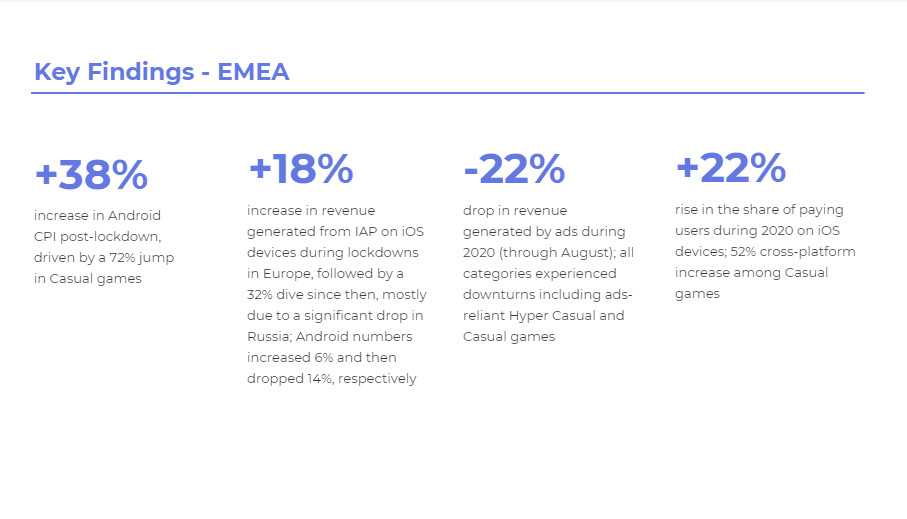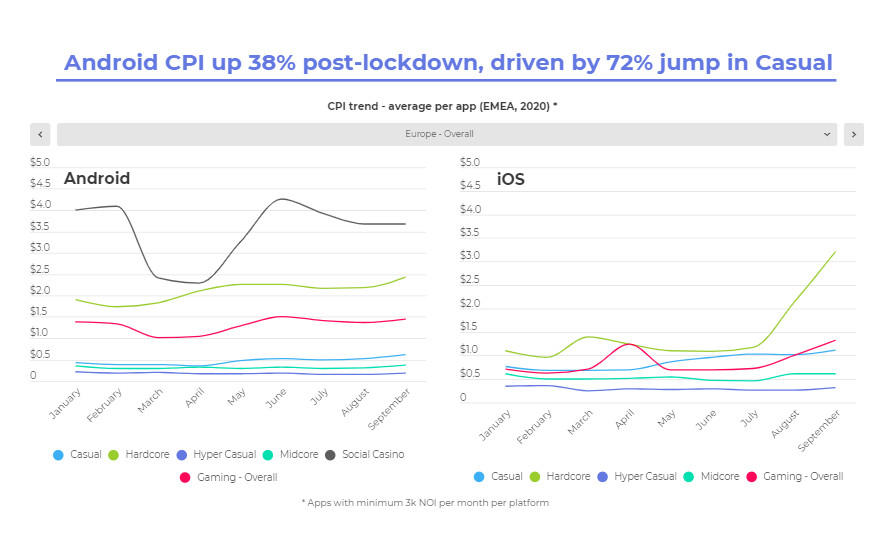Mobile gaming experienced a real boom during the corona crisis. In the State of Gaming Report, AppsFlyer takes a close look at all developments.
Mobile apps are very popular. Games are the driving force behind the mobile app economy. With the corona pandemic, however, the download and user numbers are on a completely new level. Many reached for their smartphones in search of distraction and entertainment during the lockdown. But is this a temporary phenomenon or “The New Normal”? The marketing analysis platform AppsFlyer addressed this question in this year’s State of Gaming Report.
Can mobile gaming maintain the popularity level?
The report shows that the demand for gaming apps increased by 45 percent worldwide in 2020, not least as a result of the corona crisis.
–
It’s no surprise that we’ve seen a massive surge in new users trying out games for the first time; in particular, the installations of hyper casual games increased by 90 percent. The number of marketing-driven non-organic installations has increased by an astonishing 250 percent,
explained Ben Jeger, Managing Director Central Europe at AppsFlyer. It is significant that many of the gaming apps were able to maintain the engagement of the newly acquired users even after the lockdown. In-app spending began to surge in March, peaking in May, up 25 percent from February 2020, and again later in July. That increase was largely due to casual games, which grew 55 percent and maintained high revenue levels through August. It is clear, according to the report, that users are becoming less and less tolerant of in-app advertising and are therefore willing to spend more within the app.
Income from paying users could in some cases be increased by 160 percent

–
The income from paying users rose by an average of 95 percent, which means that they have almost doubled. Hardcore games recorded an increase of 160 percent, social casino games 130 percent, midcore games 60 percent and casual games 30 percent. As the pandemic progressed, the cost of installations across all genres rose and rose by 38 percent for Android in the EMEA region.

Although successes were also recorded after the lockdown, it remains difficult to estimate how successful mobile games will remain over time. Jeger points out further effects of the pandemic and the changes of iOS 14 to the App Tracking Transparency Framework:
Widespread economic impact of the pandemic and other factors such as Apple’s changes to iOS14 to the App Tracking Transparency Framework are creating great uncertainty in the industry and making it difficult to say with certainty what to expect.
You can find the entire report here for download.
–

